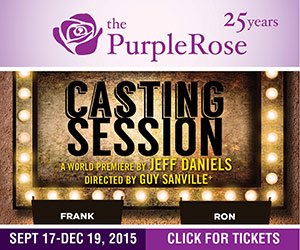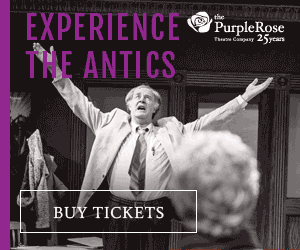Optimization is a word that marketers overuse. Put simply, it means we try and then test, rework and try again. Like medicine, marketing is a practice, and one that is finely honed over time.
On the first day of a campaign, any great marketer has put a lot of thought into audience segments, content artifacts and visuals. They’ve described, in painstaking detail, just how the campaign will go to market, launch, and convert. Landing pages or sections of a website have been built to collect and inspire action for users. This level of detail can’t be overlooked whenever a campaign is crafted, otherwise the conversions we all hope will come surely fall short.
But how does one know when a marketing effort requires new creative? At MLive Media Group, we often say that gut isn’t a strategy. Just because you feel that a piece of creative isn’t effective doesn’t make it so.
“No campaign is ever as inefficient as it is on day one.”
Ideas about Changing Creative to Entice Engagement
CONTRAST
Consider using animation to highlight certain portions of the imagery or text. In this example, the ad’s behavior draws the eye and entices more interaction. In this case, the example is around casting for a local theatre’s upcoming performance. Notice how the ad, in the “A” position, is largely black and white. While appealing, it is positively illuminated when changing color. The contrast in the before and after views as well as in the difference surrounding the content is engaging and enticing.
Notice how the ad, in the static position, is largely black and white. While appealing, it is positively illuminated by the rollover behavior that turns 90% of the ad purple. This contrast, both in the before and after views as well as the difference between and surrounding content, is engaging at the least, and enticing at best.
ORIGINAL CREATIVE


optimized ad with animation

Use of Transparency
In this initial set of creative ad units our designer captured the concept of “a transparent experience.” Our clients were hopeful for units that truly told a story of building trust with their organization. They wanted their ad units to speak the way they spoke, and illustrated the many ways that they were available to talk. In this case, the artist chose white and pale grey as a way to illustrate this.
As this campaign progressed to a place wherein it was clear that clients understood and accepted this transparency as part of the brand, the use of transparent panels was a natural next step. Lacing multicolored, ombre panels over and behind the subject matter created a new, more colorful take on the ad units and the experience.
ORIGINAL CREATIVE



OPTIMIZED ADS



SPACIAL DISRUPTION
When building material to live online, we must keep in mind the native space and how the web world is built. Crafted to fit together like building blocks, with one bumping up to the next in repeated grids, ad units can begin to look like wallpaper. Consider any design element that disrupts that concept, creating negative space to be interruptive to the eye.
DESIGN FOR THE AUDIENCE
Baby Boomers prefer more “meat” in their advertisements, and are not hindered by greater detail. Millennials, by contrast, prefer modern looks with a great deal of negative space. Generation Z needs us to break up swaths of text with icons, graphics, or images with a greater frequency than any generation that came before them. We don’t need to buy an ad space and display a single ad unit anymore. Split your audience types, and serve each their own ads.
Assessments Before Optimizing Creative
Review the campaign’s performance. Is it pacing properly to achieve the number of impressions needed to create lift?
Are the audience segments well refined? Too broad and you aren’t maximizing your spend—instead wasting marketing dollars, hopeful that the wrong audience will engage.
Are you properly identifying behaviors that indicate a consumer is ready for more? In the engagement phase, use pixels wisely to remessage those that are already raising their hands.
Don’t concentrate on clicks. A solid CTR is a great thing to have, especially since true attribution is so rare. But don’t rely on this metric as the sole proof that a campaign is working. If organic traffic is noticeably up, your campaign is creating the awareness you desire, even if it isn’t seen in the direct click through.

These optimizations aren’t the only ones that should be considered. But these small adjustments in a design strategy can garner big results. Don’t adjust too frequently, or you won’t know when changed direction created impact. But don’t miss out on the chance to optimize creative for better performance.
INDUSTRY INSIGHTS
Blog Posts
Small Brand, Big Impact: Why Size Is Your Branding Advantage
Content & Creative
In a world dominated by corporate giants, your small business's branding isn't just an expense—it's your secret weapon. Learn how strategic branding creates authentic customer…
Why the Super Bowl is Important for Marketers, Especially if Your Team isn’t Playing
Content & Creative
The Super Bowl transcends football, becoming a cultural phenomenon where Americans collectively spend $17.3 billion on game day celebrations. But beyond the snacks and spectacle…
How Dad Jokes Accelerated a TikTok Account
Content & Creative
When creating content for social media, consistency and clear audience expectations matter as much as quality. A 34-day TikTok experiment with Christmas dad jokes showed…


 Ad Choices
Ad Choices
